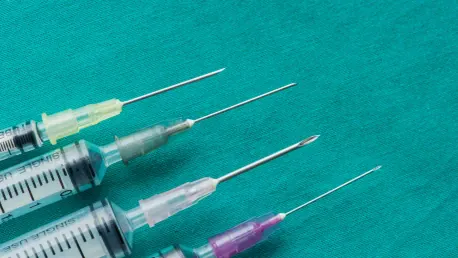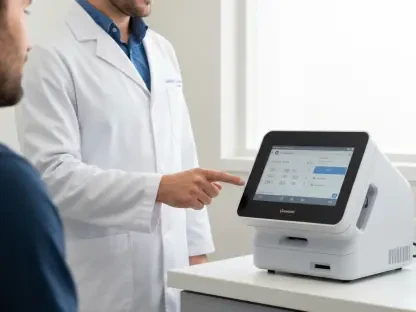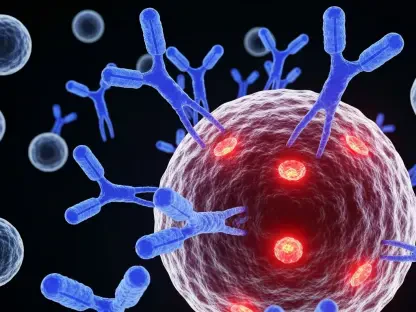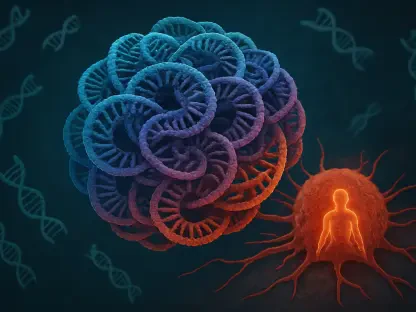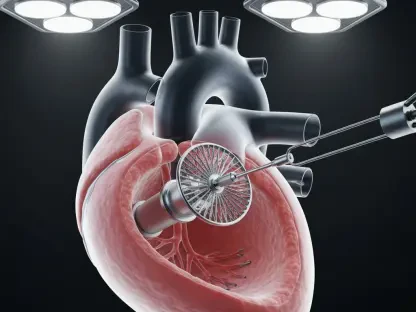The quest for innovative drug delivery systems has taken a fascinating turn with recent research inspired by cephalopods. Scientists from the Massachusetts Institute of Technology (MIT) and Novo Nordisk have spearheaded the study, delving into a needle-free drug delivery system modeled after the jet propulsion mechanism of cephalopods like squids. This revolutionary approach involves a cutting-edge microjet system aimed at administering medications directly into the gastrointestinal (GI) tract, potentially transforming the landscape of macromolecule delivery, such as insulin and RNA. The implications of this technology could bring significant advancements in patient care, particularly for those who require regular medication administrations.
Challenges with Traditional Drug Delivery
Traditional needle-based injections present several substantial challenges that necessitate professional handling, creating a barrier for many patients who need to administer their medications frequently. The associated risks of needle-related injuries and the complications with sharps disposal also pose serious public health concerns, further highlighting the need for safer, more efficient alternatives. These limitations drive the search for new methods that prioritize both effectiveness and patient safety.
At the same time, current oral delivery mechanisms grapple with significant difficulties. Large molecules are often broken down by digestive processes, reducing their bioavailability compared to subcutaneous injections. This inefficiency hinders the achievement of desired therapeutic effects, making it clear that there is a pressing need for a more effective drug delivery system. This is especially critical for macromolecules like insulin and RNA, which require precise and reliable delivery to ensure their efficacy. Addressing these challenges is crucial for advancing medical treatments and improving patient outcomes.
Inspiration from Cephalopods
Taking a cue from the remarkable jet propulsion mechanisms of cephalopods, such as squids, researchers developed a novel microjet system designed for high-pressure delivery of medications directly into the GI tract. Squids move swiftly through water by expelling a high-pressure stream, a biological mechanism that provided a unique template for creating this innovative drug delivery technology. The cephalopods’ natural capabilities inspired the precise and high-pressure functionality aimed for the microjet devices.
The design of these devices is a testament to the potential of biomimicry in advancing medical technology. By mimicking the cephalopods’ jet propulsion, researchers aimed to overcome the limitations of traditional drug delivery methods. This breakthrough could revolutionize the administration of medications, particularly for patients requiring frequent and precise dosing. The cephalopod-inspired system not only promises enhanced precision and efficiency but also opens new avenues for non-invasive drug delivery that were previously unattainable with conventional techniques.
Study Design and Device Variations
To assess the versatility and effectiveness of the cephalopod-inspired microjet system, the study evaluated four different device configurations. Two of these were autonomous devices, dubbed MiDeRadAuto and MiDeAxAuto, designed to function independently, representing a convenient and user-friendly option for patients. The other two devices were endoscopically guided, called MiDeRadEndo and MiDeAxEndo, optimized for various sections of the GI tract.
Each device configuration was meticulously crafted to address specific challenges associated with drug delivery. The autonomous devices sought to present a self-activating solution, simplifying the process for patients. In contrast, the endoscopically guided devices aimed to enable precision targeting for specific anatomical areas. This range of device designs allowed researchers to explore different methodologies for achieving optimal drug delivery, thereby broadening the scope for potential applications and enhancing the overall versatility of the technology.
Testing and Calibration
Ensuring the effectiveness of the microjet devices required rigorous testing and calibration within lab settings. Various parameters, such as nozzle diameter, input pressure, and jet angle, were meticulously optimized to achieve effective tissue penetration. These lab tests were indispensable in determining the ideal conditions for delivering medications into the GI tract without causing tissue damage. The thorough calibration process ensured that the microjet system could operate with the highest level of precision and safety.
Trials conducted on porcine GI tissues measured the depth and distribution of fluid delivery, providing valuable insights into the system’s performance. Advanced imaging techniques, such as computed tomography (CT) scans, were employed for visualization, offering detailed assessments of the microjet devices’ capabilities. These tests demonstrated the microjet system’s potential to deliver medications with exemplary precision and efficiency. This meticulous testing and calibration process confirmed that the technology could meet the rigorous demands of clinical applications, paving the way for its future use in medical practice.
In Vivo Trials and Results
The true efficacy of the microjet devices was put to the test in in vivo trials, where therapeutic agents like insulin, GLP-1 analogs, and siRNA were administered into specific GI sites in pigs and dogs. These trials revealed high systemic absorption levels, which were comparable to those achieved with traditional subcutaneous injections. The successful absorption rates underscored the groundbreaking potential of the microjet technology.
In particular, the radial endoscopic device achieved 67% bioavailability for GLP-1 in pig intestines, while the axial endoscopic device reached 82% bioavailability for siRNA in the stomach. Although the autonomous devices demonstrated slightly lower bioavailability compared to the endoscopic guided devices, they still showed significant improvements over conventional oral delivery methods. These results highlighted the microjet system’s capacity to transform how macromolecules are administered, presenting a viable and efficient alternative to more invasive techniques.
Potential Impact and Future Directions
The innovative microjet system developed by scientists from MIT and Novo Nordisk has the potential to revolutionize drug delivery, especially for macromolecules like insulin and RNA. Inspired by the jet propulsion mechanisms of cephalopods, this needle-free technology aims to administer medications directly into the GI tract, offering a less invasive and more effective alternative to traditional methods. With continued research and development, this groundbreaking approach could significantly advance patient care, improve the management of chronic conditions, and enhance the quality of life for countless individuals.
